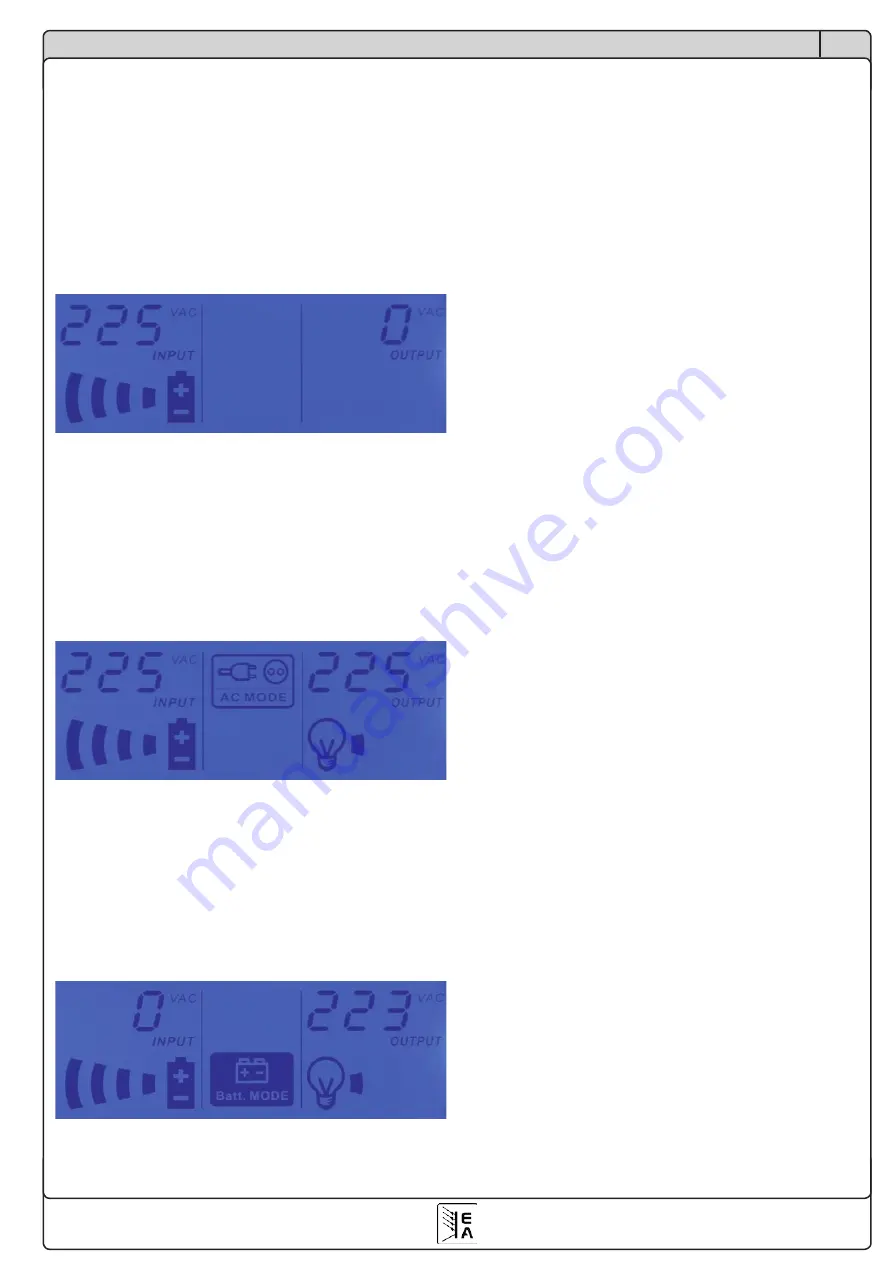
1
© 010, Elektro-Automatik GmbH & Co. KG
EN
About the device
After return of the mains supply, the UPS will switch
automatically to normal operation, the batteries are
charged again and the acoustic alarm vanishes. The
recharge time varies depending on the duration of the
former mains failure. Means, the level the batteries
were discharged to.
In case the mains failure lasts for a longer time, the
batteries will discharge and the UPS will switch off,
before the deep discharge level is reached. In this
very moment the connected loads are also switched
off immediately.
In order to prevent this and an eventual data loss at the
PC, the UPS can be monitored by the PC it is connected
to. See section 7.3.
7.3 Monitoring the UPS with USB and a PC
In order to prevent data loss because of a mains failure
or automatic self-shutdown because of overload/over-
heating of the UPS, the UPS can be monitored by a PC
and an appropriate software, which can shut down the
PC safely before any critical level has been reached.
Simply connect the UPS and the PC (serial port), in
-
stall, start and configure the included software to your
demands.
The data cable can be extended by a extension cable.
A maximum total length of 5m without an USB hub shall
not be exceeded.
8. Maintenance
The internal batteries are sealed, maintenance-free ty-
pes, which do not require regular maintenance. After the
nominal life time or at premature aging and noticeable
capacity drop (backup time too short), they should be
replaced. This is only done by trained personnel which
is instructed about the replacement procedure.
If the UPS is not used for a longer time, we strongly
recommend charging it completely every -3 months,
to maintain battery capacity and life time.
9. Troubleshooting
If the UPS is having an abnormal condition:
1. First disconnect the input power line and output
connections and then check whether all connections
have been made properly.
. Check the fuse. If the fuse is blown, then replace
it with one having the same current and voltage
rating.
3. Remake all connections and try to switch the UPS
on.
7. Handling and operation
The button on the front is used to switch the device on
or off, at mains presence or at mains failure (cold start).
Press the button shortly and firmly, until you can hear
a beep sound. After a short lead time the UPS will be
ready to work.
During operation, the display constantly indicates all
necessary values at a glance. Errors acoustically indi-
cated. There are no further operating elements.
Display in offline operation:
7.1 Normal operation
Normal operation at an UPS means the presence of
mains voltage where the load(s) are supplied by the
UPS via an internal transformer, which is standard at
models with Line Interactive technology. The output
voltage is stabilised in a certain range by a so-called
boost & buck converter. During operation of the UPS
the display indicates the measured input voltage, as
well as load level, battery level and output voltage:
7.2 Battery operation (backup)
At a mains failure (mains loss or undervoltage), the
UPS will automatically switch to battery operation,
also called backup mode. Then the consumer(s) are
supplied from the batteries via a voltage converter. The
UPS signalises this with an acoustic alarm.
Display in battery operation:


































